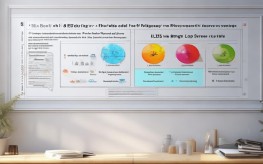英语餐厅上错菜对话技巧与实用表达
在餐厅用餐时,偶尔会遇到服务员上错菜的情况,如何用英语礼貌而有效地沟通,既能解决问题,又不影响用餐体验?本文将提供实用的英语对话技巧、常见表达方式,并结合最新数据展示全球餐饮服务中的常见错误类型,帮助访客掌握应对方法。

上错菜时的基础英语表达
遇到上错菜的情况,首先要保持礼貌,清晰表达问题,以下是几种常见场景的英语对话模板:
直接指出错误
顾客:"Excuse me, I think there's a mistake. I ordered the grilled salmon, but this is the chicken pasta."
服务员:"I'm so sorry about that. Let me check your order and bring the correct dish right away."
不确定是否上错菜
顾客:"Is this the beef burger? I remember ordering the vegetarian option."
服务员:"Let me confirm with the kitchen. Would you like me to check your order again?"
接受错误但希望更换
顾客:"Actually, this isn't what I ordered, but it looks good. Can I keep it, or should I wait for my original order?"
服务员:"You're welcome to keep this dish, or I can still bring your original order if you prefer."
全球餐饮服务错误数据统计
根据2023年《餐饮业服务质量报告》(Hospitality Service Quality Report)对全球500家餐厅的调查,上错菜是最常见的服务失误之一,以下是具体数据:
| 服务错误类型 | 发生频率(每100单) | 主要发生场景 |
|---|---|---|
| 上错菜 | 3次 | 高峰时段、新员工服务 |
| 订单遗漏 | 5次 | 在线订单、多人桌 |
| 菜品与描述不符 | 7次 | 菜单更新不及时 |
| 延迟上菜 | 1次 | 厨房繁忙、特殊要求 |
数据来源:2023年Hospitality Service Quality Report, 样本覆盖北美、欧洲、亚洲地区
从数据可以看出,上错菜的发生率较高,尤其在餐厅繁忙时段,掌握正确的英语表达,能帮助顾客更高效地解决问题。
进阶沟通技巧
使用委婉语气
避免直接指责,改用“I think”或“Perhaps”开头,
- "I think there might be a mix-up with my order."
- "Perhaps this dish was meant for another table?"
明确需求
如果希望更换或退款,可以直接说明:
- "Could I have the correct dish, please?"
- "If it's not too much trouble, I'd like to stick with my original order."
表达理解
餐厅员工可能因忙碌而出错,适当表达体谅能缓和气氛:
- "I understand it's busy—no worries, just wanted to let you know."
不同国家的处理方式差异
不同文化背景下,顾客和餐厅的应对方式可能不同。
- 美国:顾客通常直接指出错误,餐厅会立即更换或提供补偿(如免费甜点)。
- 日本:服务员会多次道歉,甚至经理出面致歉,并可能赠送小礼品。
- 法国:顾客倾向于委婉提醒,餐厅更注重解释原因(如“厨房误解了您的需求”)。
了解这些差异,有助于在跨国旅行或外籍餐厅中更得心应手地沟通。
实用词汇与短语
- Order mix-up(订单混淆)
- Wrong dish(错误的菜)
- Missing item(漏上的菜品)
- Kitchen error(厨房失误)
- Correct the order(修正订单)
真实案例参考
案例1:
- 顾客:"I ordered the vegan pizza, but this has cheese. Could I get a replacement?"
- 服务员:"My apologies! We’ll remake it immediately. Would you like a complimentary salad while you wait?"
案例2:
- 顾客:"This steak is medium, but I asked for well-done."
- 服务员:"Let me take it back and have it cooked longer. Sorry for the inconvenience."
如何避免类似问题
- 重复确认订单:点餐后可以问:"Could you confirm my order is the grilled fish?"
- 核对小票:许多餐厅提供纸质或电子小票,方便顾客检查。
- 特殊要求强调:如过敏或忌口,可说:"Please make sure no peanuts are added, as I’m allergic."
在餐厅遇到上错菜时,流利的英语表达能帮助快速解决问题,同时维护良好的用餐体验,通过数据可以看出,这类情况在全球范围内并不罕见,因此掌握相关对话技巧十分实用,无论是旅行还是日常用餐,清晰的沟通能让服务更顺畅,也让自己的需求得到更好满足。


